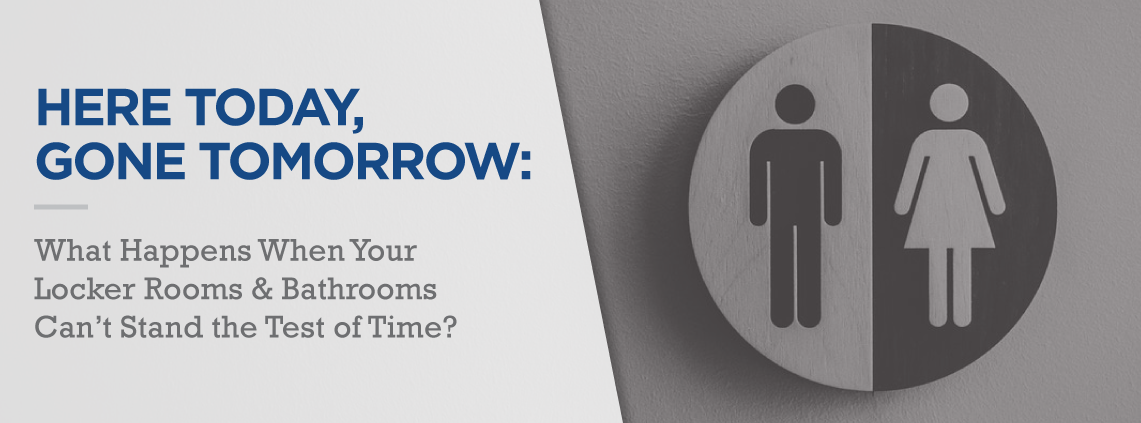Here Today, Gone Tomorrow: What Happens When Your Locker Rooms & Bathrooms Can’t Stand the Test of Time?
What’s the one thing that you don’t look forward to each year in terms of your bathrooms and locker rooms? Maintenance costs.
If you’re a facility manager, you never want to have to repeatedly dip into your budget for pesky repairs and tweaks that only end up reoccurring each year. If you’re noticing this issue, the problem stems from the inability of your bathroom and locker room materials to stand up to the test of time, and we know why.
Scranton Products is familiar with this trend and is dedicated to making sure that your bathroom or locker room is durable and long-lasting so you won’t have to worry about any extra maintenance costs. Continue reading to learn why your bathrooms and locker rooms aren’t standing the test of time, what happens when they can’t, and how you can prevent this problem.
Why Aren’t My Partitions or Lockers Holding Up?
Most bathroom partitions are built with a phenolic composition. The main issue with phenolic is the layers of material throughout. Phenolic partitions are built with kraft paper and resin mixture making up the core, which lacks durability and ends up costing more in the long run.
The most common locker choice is a metal locker, but while it was once considered a standard, the metal is easily damaged and, as the years go on, requires more and more upkeep.
What Happens to the Materials Over Time?
The kraft paper inside your phenolic bathroom partitions is susceptible to moisture which, in turn, increases the possibility of mold and mildew growth. Mold and mildew thrive in moist environments such as bathroom settings. This will eat away at the inside of your partitions, creating an unsanitary environment and resulting in frequent high costs to get rid of the mold and mildew, since growth can occur in a phenolic bathroom partition within 21 days of being exposed to moisture.
Metal lockers aren’t built to last, and the constant slamming of the locker doors, or any other damage, will add up. Typically these lockers are built from steel that is less than 1/16 of an inch thick, making them prone to denting and serious damage. Too much damage and you’ll need to replace the locker to keep your high-end locker room design and to make sure that your locker can function effectively.
Is There a Material That Combats These Factors?
In fact, there is. HDPE plastic materials combat these detrimental factors in numerous ways.
HDPE Hiny Hiders bathroom partitions are built with a solid homogeneous color throughout. Unlike kraft paper, this interior material is impermeable to moisture, thus preventing mold growth and helping you not to worry about paying for replacement partitions.
HDPE Duralife lockers are built out of ½ inch thick plastic in order to increase impact resistance. While metal lockers are easily dented or damaged and need to be replaced, Duralife lockers can stand up to the test of time and save you long-term costs with their lack of needed repairs.
You can find Scranton Products’ HDPE materials, such as our Hiny Hiders bathroom partitions or Duralife lockers, near you.




